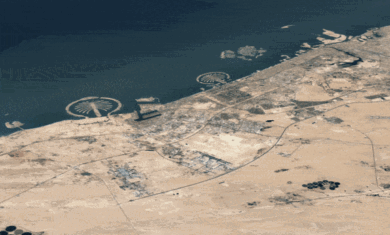Denver has emerged as one of the flagship cities for both Google Earth and Virtual Earth. Google Earth has built a ton of 3D models in the city, and Virtual Earth has already converted it to “version 2.0” with over 100,000 3D models (as well as 300,000 trees). Therefore, I thought it’d be a good place to compare some things.
I already did a quick comparison of Turner Field in Atlanta, but that wasn’t completely fair since Atlanta isn’t an updated city in Virtual Earth. For this comparison, I picked three different locations in the city and captured similarly positioned screenshots from each of the two programs. In each set of pictures, the Google Earth image is on the left, and the Virtual Earth image is on the right.
Please note that this brief review is about visuals only. This doesn’t get into usability, extendability, layers, etc. This is just graphics, pure and simple. A more in-depth review will come later.
Coors Field
The trees add a nice touch of realism in the Virtual Earth model, but the Google Earth model blows it away.
City Overview
They’re pretty comparable here. Virtual Earth has more buildings in view, but overall they look quite similar.
Downtown Park / State Capitol
Here is where Virtual Earth really shines. The extra buildings in the background and the trees look excellent. Google has a few nice touches (such as the statues) and the building looks a bit better, but the trees really make the Virtual Earth page feel more realistic.
Conclusion
All in all, things haven’t changed much — they’ve just scaled up. Just as before, Google’s buildings look a little better, but Microsoft has a ton more of them. This should be a fun battle to watch over the next few years!








This is awesome, both companies products are coming along nicely…
My understanding is that Microsoft’s Denver is now created 100% with automated processing, whereas Google’s Denver has significant manual steps. If so, it might indicate that Google’s process will not scale to large areas and large numbers of cities.
That’s my understanding as well. However, it appears that Google now uses some kind of automated processing to assist with the models, but there is no official word on that yet.
It seems to me that they need to do something to help them scale more quickly, as Microsoft is pushing out insane numbers of buildings with each update.